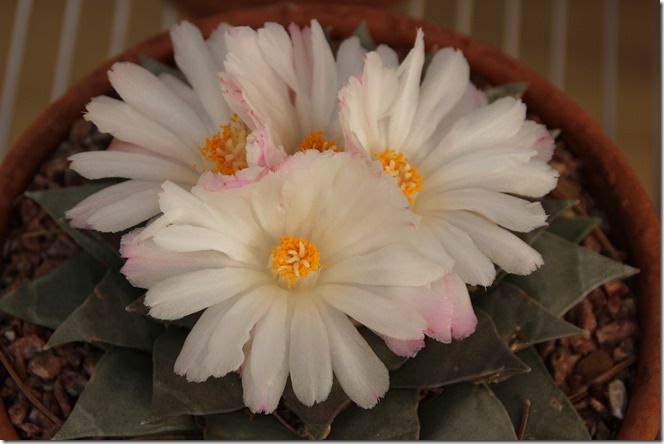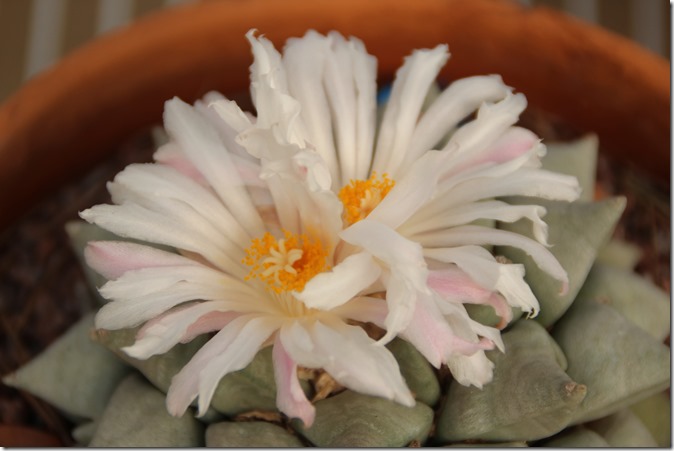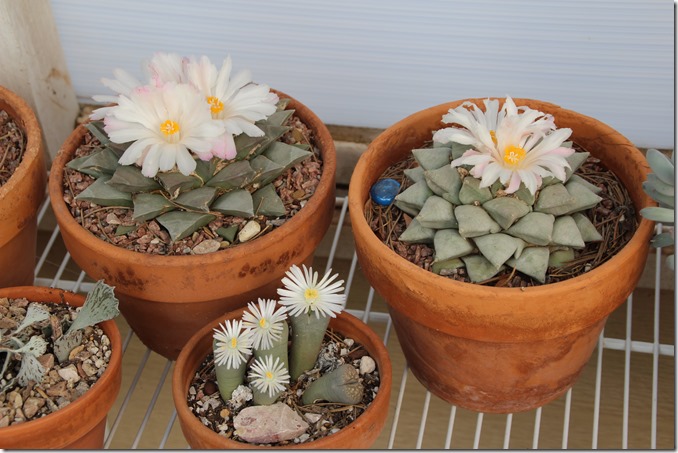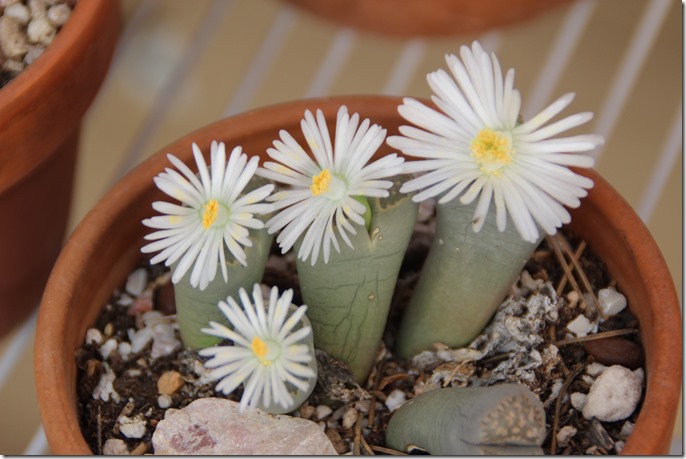I have shared these plants with you in the past, but some of you who are new to the blog might have missed them. They bloomed again the other day, and they are just so pretty, I though they were worth sharing again.
This ariocarpus retusis is my best bloomer. The literature says this plant normally doesn’t bloom until it is ten years old or more, and this one has bloomed for about the last three years, so it must be over ten years old.
The ariocarpus trigonus is not quite as good a bloomer, but always makes a good showing. It is about the same size and probably about the same age as the retusus.
I have four other ariocarpus varieties, a.trigonus elongatus, a. fissuratus, a. fissuratus lloydii, and a. agavoides, but they are smaller, obviously younger, and just aren’t ready to bloom much yet. Ariocarpus happens to be a slow-growing species, so one must be patient for them to add size and flowers.
Ariocarpus are native to Texas and Mexico, are considered endangered, and it is rare to find them in the wild. They are classified in the Cactaceae family, but are more of a succulent plant than cactus because they have no spines. They are quite rigid and hard to the touch and are just fascinating plants to me. They are interesting even without the flowers because the center of the rosette of the plant is covered with a fuzzy wool from which the flower buds emerge and then burst open.
The lithops in the third pot just happen to be in their blooming season now also, and they all three look pretty and bright together, so naturally I had to share them with you as well. Lithops are succulents that are found in southern parts of Africa. These happen to be a bit tall, which serious collectors consider a flaw; they are supposed to be flat and close to the ground where they blend in with and look like the rocks around them, hence the common name living stones. But they made pretty flowers for me, so I can’t just toss them as inferior! Lithop bodies are firm but not as hard as the ariocarpus.
Ariocarpus tend to be sold in specialty cactus and succulent nurseries, so if you want one of these, you will have to hunt for them or go online. Living stones, the lithops, are often sold in the big box stores and can be found easily.
Ariocarpus need water during the summer, but make sure to let them dry completely before watering again. Then cut back on water in the winter after they have bloomed. Lithops need less water, too, but I water mine off and on all year. One way to tell if lithops need water is if they look wrinkled and shriveled. But again, good drainage and complete drying time are essential.
I really enjoy both these plants and recommend adding them to your collection, but of the two, ariocarpus are the more unusual. Just be ready to wait a while for flowers and enjoy their odd little bodies in the meantime.




Recent Comments